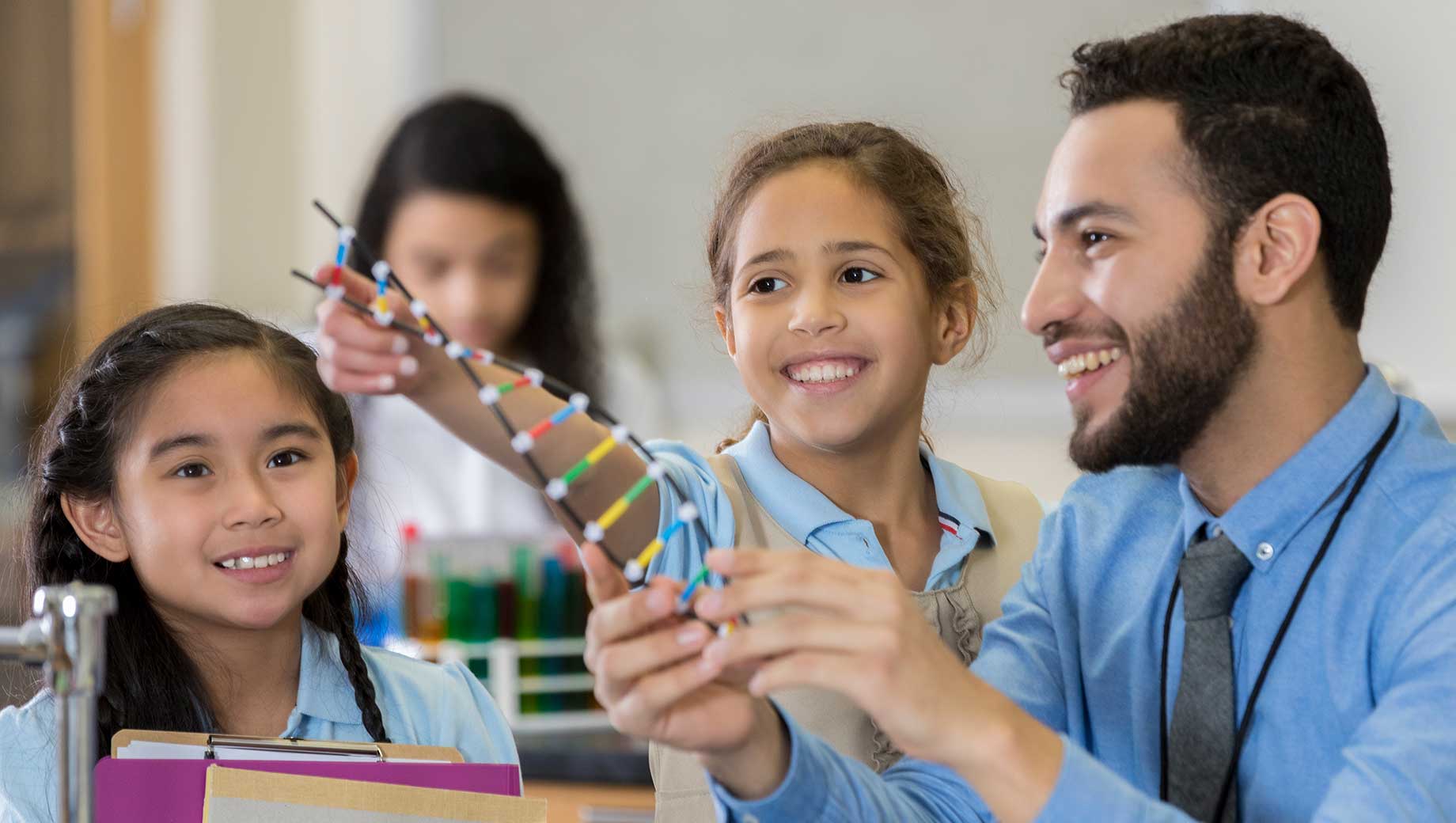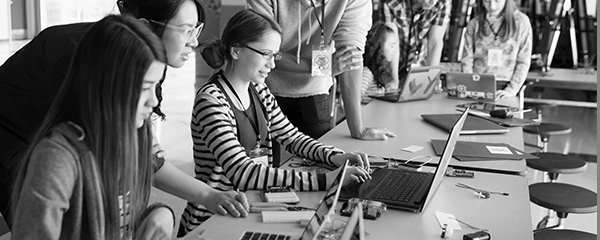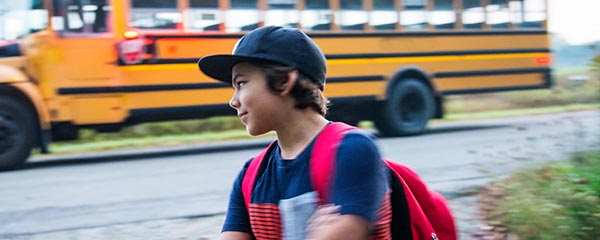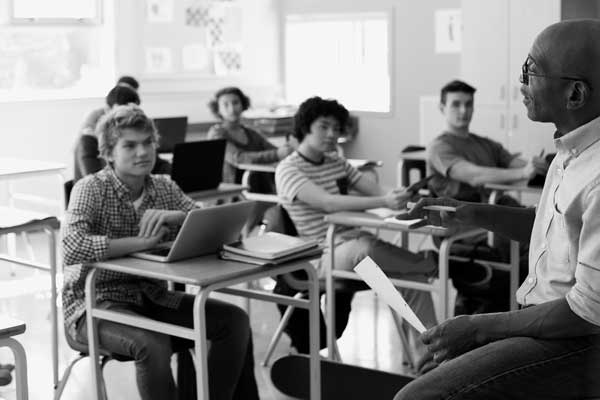Story Highlights
- Social-emotional learning is rapidly growing in popularity in U.S. schools
- Student engagement and hope are significantly related to student academic outcomes
- The Gallup Student Poll helps you discover elements that drive student success
With the current shift in U.S. education policies putting a priority on social-emotional learning (SEL), the importance of teachers and schools having SEL resources -- proven to create positive student outcomes -- is growing rapidly. As the new goals and guidelines are implemented in accordance with the Every Student Succeeds Act (ESSA), schools have, unfortunately, been flooded with instructional guides, curriculum advice, and other implementation options that are founded on minimal research or unproven outcomes.
Measure What Matters Most for Student Success
For the past 12 years, Gallup and been surveying students through the Gallup Student Poll to research and fine-tune an SEL-based solution with proven impacts and outcomes. Statistically linked to a majority of the mandated ESSA accountability measures, the outcome of Gallup's research is two indexes that measure students' engagement and hope. These indexes consist of nine and seven items, respectively, and indicate students' "involvement in and enthusiasm for school" and "ideas and energy for the future." The outcomes of these indexes go beyond showing the level of engagement and hope of a school's students -- they are linked to the overall success of districts and schools, based on the measures to which they are being held accountable.
Discover the Elements That Drive Success
One recent Gallup study including 128 schools and more than 110,000 students found that student engagement and hope were significantly positively related to student academic achievement progress (growth) in math, reading, and all subjects combined, along with postsecondary readiness in math and writing. Focusing specifically on student engagement, the study found that schools in the top quartile of student engagement had significantly more students exceeding and meeting proficiency requirements than schools in the bottom quartile of engagement.
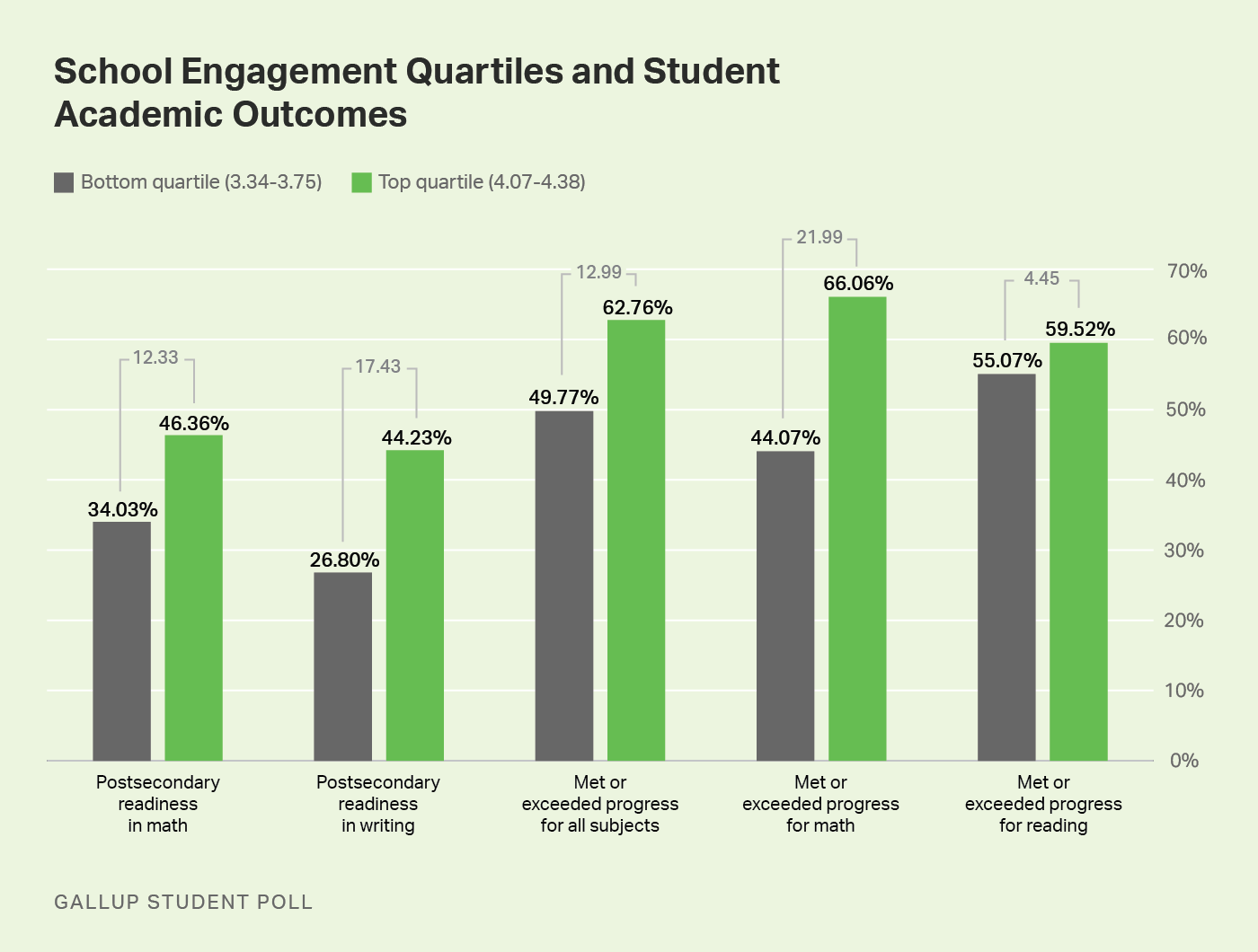
When compounded with another Gallup study finding that identified links from student engagement and hope to student discipline and behaviors, implementing strategies for measuring and growing both of these is a win for our education system as a whole. The impact these foundational notions of student engagement and hope have on students and corresponding school outcomes is precisely the focus of the newly minted ESSA state, district and school report cards. The report cards' measures include a combination of student achievement, student growth, English language proficiency, high school graduation rates and a school quality or student success measure, which were selected by each state autonomously.
ESSA and the SEL movements are steering the education system in a great direction, focusing education leaders' and schools' efforts where they should always be. As Gallup's founder Don Clifton put it, "Our greatest contribution is to be sure there is a teacher in every classroom who cares that every student, every day, learns and grows and feels like a real human being."
Create the Right Classroom Environment
The means to impact student engagement and hope can be found in multiple avenues. One is the straightforward path of measuring student engagement and hope to identify areas of strength within a school and areas of opportunity in which to implement different solutions. Leveraging the different items within the engagement and hope indexes provides building blocks for this step, while still maintaining the autonomy of teachers and schools to decide the best way to do so.
Another point of impact is the effect teacher engagement has on student engagement. By providing teachers with the opportunity to voice their opinions on different areas that affect their engagement, principals can better partner with teachers to enhance a culture of engagement. Together, they can create an environment that is more conducive to teacher productivity, which fosters the classroom environment best suited for student engagement, hope and learning.
"Our greatest contribution is to be sure there is a teacher in every classroom who cares that every student, every day, learns and grows and feels like a real human being."
A third and final intervention that can support student engagement and hope is the identification and development of student talents and strengths. While great teachers innately practice this without any external resources, the simple identification and acknowledgment of the things a student naturally does well can be an immediate boost to their self-esteem, wellbeing, engagement and hope.
No matter the policy or level of standards in place, by focusing on interventions that provide positive outcomes for students and teachers alike, our education system will develop as it was always intended.
Gallup can help you improve teacher and student outcomes:
- Read Positive Relationships Between Student Engagement and Hope and Student Behavior to uncover more key findings from a recent Gallup Student Poll analysis.
- Discover how to help kids have great lives by focusing on what they do best.
- Get in touch with a Gallup expert for more information on how we can help you improve your school's success.
